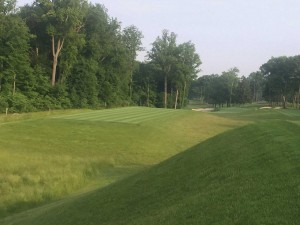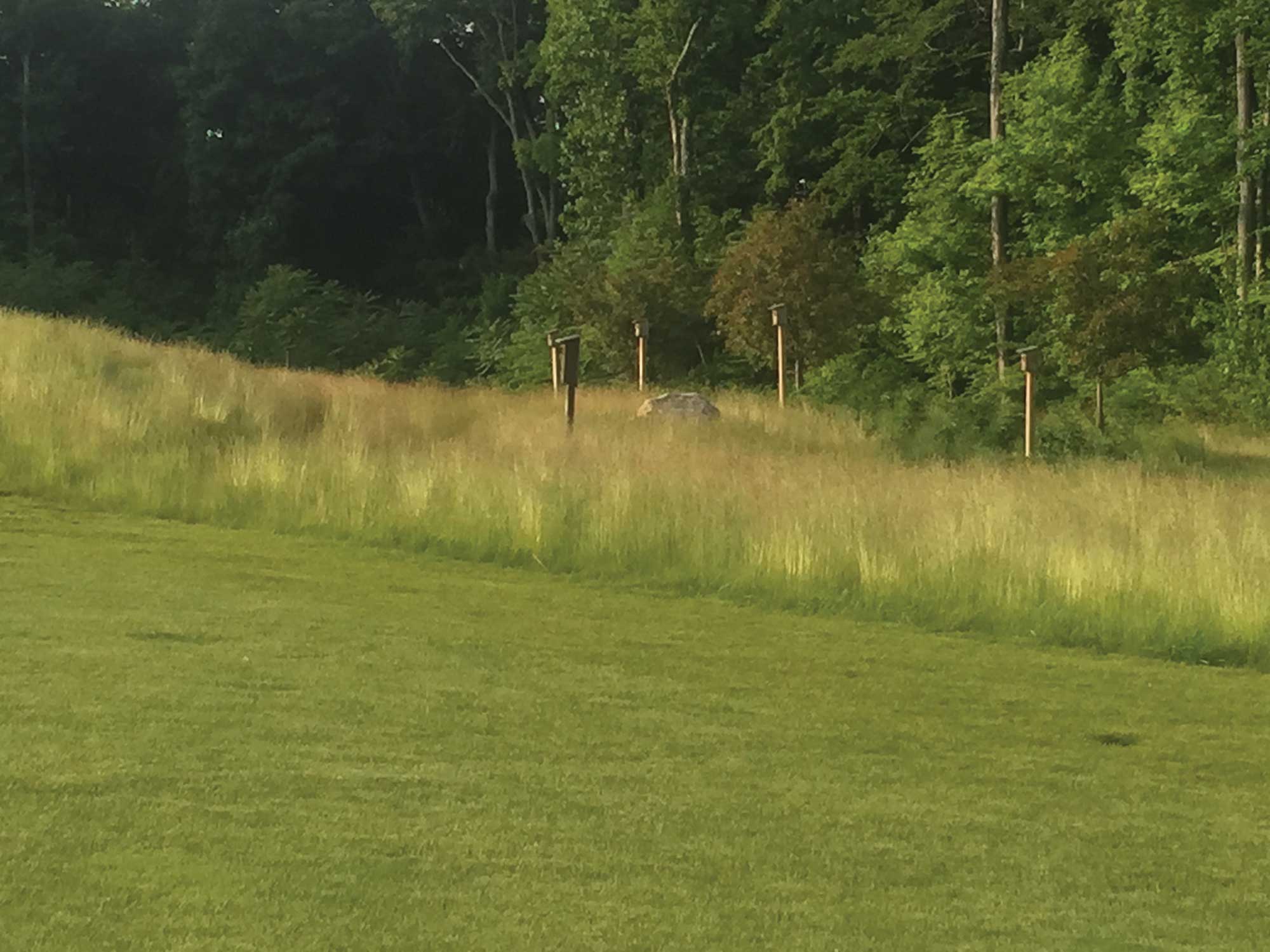Managing Naturalized Areas
Bayer’s John Bresnahan Offers Practical Tips for Keeping Weeds at Bay and Balls in Play
 Naturalized areas continue to be popular among golf course superintendents. And no wonder. They help create an aesthetically pleasing contrast to intensely managed turf while enhancing wildlife habitat. But contrary to what many believe, these areas require time and effort to establish and maintain. If left to grow at Nature’s will, naturalized areas will quickly become little more than large weed patches and overgrown eyesores. The key to ensuring the success of any naturalized areas you create on your course is, in short, careful plant selection and maintenance planning and execution.
Naturalized areas continue to be popular among golf course superintendents. And no wonder. They help create an aesthetically pleasing contrast to intensely managed turf while enhancing wildlife habitat. But contrary to what many believe, these areas require time and effort to establish and maintain. If left to grow at Nature’s will, naturalized areas will quickly become little more than large weed patches and overgrown eyesores. The key to ensuring the success of any naturalized areas you create on your course is, in short, careful plant selection and maintenance planning and execution.
Here are a few of the essentials in creating a pleasing and sustainable native area on your course.
Plant Selection and Maintenance Planning
Selecting the proper plantings is Job #1. After all, the types of indigenous or non-native plants you choose for your naturalized areas will have a significant impact on maintenance needs. For instance:
- Monostands or mixes consisting of fescues, lovegrass, bluestems, broomsedge, wheatgrass,Indiangrass, and others can provide a clean contrast to playable turf and require minimal maintenance. They are great for sloped areas prone to erosion, and some varieties even have natural weed defenses.
- Native flowers and wildflowers add color to a course but require more care to ensure seasonal blooms and growth succession over invasive, aggressive weeds. When grown from seed, wildflowers may take up to three years to provide the impact desired. Some of the most popular choices for golf courses include cosmos, yarrow, baby’s breath, black-eyed Susan, primrose, poppy, and Shasta daisy.
Controlling weeds in a naturalized area inhabited by wildflowers can be challenging. Herbicides meant to knock down broadleaf weeds may also kill wildflowers‚which are categorized as broadleaf species. That means these wildflower areas may require hand-weeding and spot-spraying to manage the broadleaf weeds.
Weedy grasses, however, can be controlled with selective herbicides. If planting wildflowers, you should consider the size of the planting area realizing that these areas will require some hand-weeding to achieve the full benefits.
Prepping an Area to Go Natural
Establishing strong, healthy plants is key for weed management in naturalized areas. When beginning a new area, use a nonselective chemical treatment to eliminate weeds and then lightly till. Then use a low seed rate per acre to avoid thick stands of vegetation. Be sure to time seeding with seasonal rains to minimize the need for irrigation. With new areas, it is important to communicate progress to members, because plants may take years to develop and achieve the desired effect.
One way to avoid waiting for the area to develop is to use established plants, if available. Plant them in the fall to make the most of favorable soil temperatures and decreased weed pressure. You could also cut costs by building an out-of-sight nursery to grow native varieties until they’re ready for planting.
Mature plants should be spaced apart so players have room to walk in and play a missed shot back onto a fairway. A number of grass options‚including lovegrass, fescues, broomsedge, and bluestem‚work well in these areas.
Promoting Healthy, Playable Growth
To sustain the integrity and playability of the course landscape, you’ll want to include seasonal thinning, trimming, mowing, and spraying of naturalized areas in your routine maintenance schedule.
Preemergent herbicides should be the pillar of any naturalized area maintenance plan. Most preemergent herbicides labeled for golf course use evolved from crop applications, which typically control tall and unsightly weeds commonly found in naturalized areas. These include grassy weeds such as barnyardgrass, foxtail, johnsongrass, panicum, and witchgrass, as well as broad-leaf weeds like spurge, lambsquarter, pigweed, and smartweed. Since most preemergent herbicides affect only the roots of germinating weed seeds, they are generally labeled for use on mature grasses with a well-established root system.
Using herbicides to preventively control weeds will be the most cost-effective strategy. If you can prevent outbreaks with one product application, you’ll save yourself the time and expense of applying multiple products on multiple weed varieties. Check your product labels‚particularly the ornamental sections‚carefully to determine plant tolerance before making applications. It never hurts, however, to test the product on a small area before applying it to a larger one.
More specifically, it’s a good idea to:
- Apply herbicides annually as part of your routine maintenance. Other strategies such as mowing and thinning the vegetation will promote healthy growth and keep the area playable.
- Mow naturalized areas twice a year, once in the spring to provide for a clean, fresh growing season and again in the fall before plants go dormant. Thinning the vegetation will also promote healthy growth and keep the area playable.
- Apply a preemergent herbicide spring and fall to control weeds.
- Consider getting a permit for a controlled burn of an area that has been established for a few years. Scheduling an annual burn during the early spring months will encourage hearty growth and renew soil.
- Apply a preemergent herbicide once new growth appears to prevent grassy and broad-leaf weeds from invading the area.
- Use postemergent broadleaf herbicides, which are effective on naturalized grass areas.
- Eliminate unsightly grassy weeds using oneof several postemergent grass herbicides. Study product labels closely to determine if your stand will tolerate the herbicide.
Naturalized areas on golf courses continue to be a developing trend. And when created and managed methodically, naturalized areas can give superintendents a visually appealing contrast to the manicured playing areas, while enhancing the environment.
Reprinted with permission from the May/June 2015 issue of the Tee to Green, a publication of the Metro-politan Golf Course Superintendents Association.





















